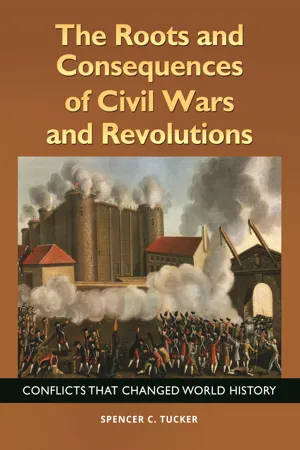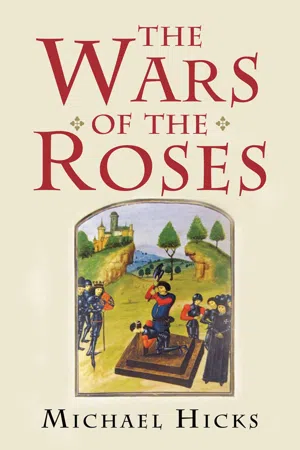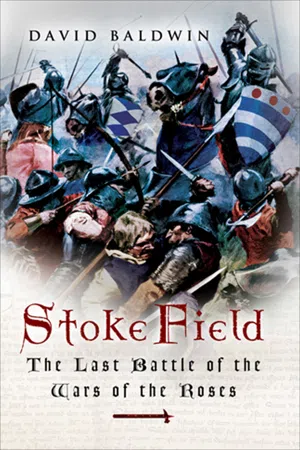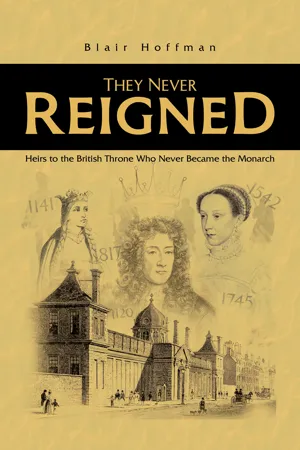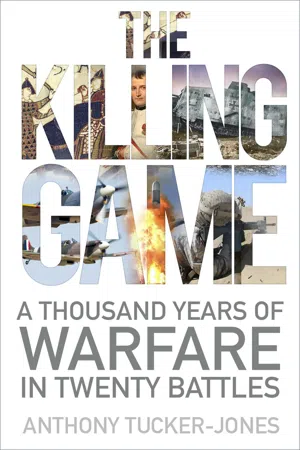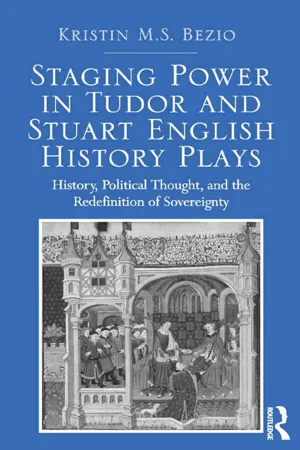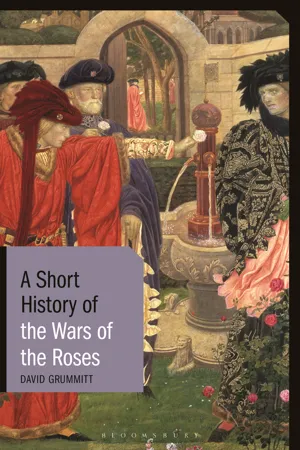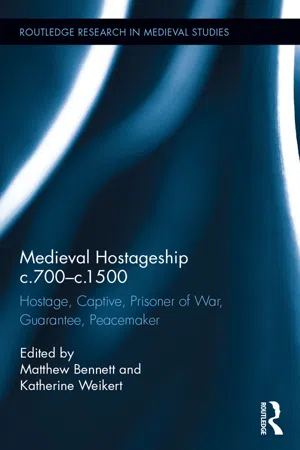History
War of the Roses
The War of the Roses was a series of civil wars fought in England between the Houses of Lancaster and York from 1455 to 1485. The conflict was primarily a struggle for the English throne, and it resulted in significant political instability and bloodshed. The war ultimately ended with the establishment of the Tudor dynasty under Henry VII.
Written by Perlego with AI-assistance
Related key terms
10 Key excerpts on "War of the Roses"
- eBook - ePub
The Roots and Consequences of Civil Wars and Revolutions
Conflicts That Changed World History
- Spencer C. Tucker(Author)
- 2017(Publication Date)
- ABC-CLIO(Publisher)
Wars of the Roses (1455–1485) CausesThe Wars of the Roses were a series of dynastic struggles fought during the period 1455–1485 for the throne of England. They were waged between the rival houses of Lancaster and York, both of which had claimants descended from the Plantagenets and King Edward III (r. 1327–1377). The name of the wars, although not used at the time, is taken from the badges of the two rival houses: a red rose of the House of Lancaster and a white rose of the House of York.There had been no major conflict regarding the succession to the throne since the so-called Anarchy following the death of King Henry I in 1135. The House of Lancaster had held the English throne since 1399, when Henry of Bolingbroke deposed his cousin Richard II and became king as Henry IV. Henry was in turn succeeded by his son, Henry V (r. 1413–1422). Henry V was campaigning in France and confident of becoming king of France when he died suddenly at the Chateau of Vincennes, apparently of dysentery contracted during the siege of Meaux. At the time of his death Henry was only 35 years old, and his son was only 9 months old. Before his death, Henry had named his brother, John of Lancaster, first duke of Bedford, regent in the name of his son Henry VI. The Lancastrian claim to the throne rested on John of Gaunt (1340–1399), first duke of Lancaster and the third surviving son of Edward III.Wars of the Roses in England (1455–1485)Approximate Strength of Opposing Forces, Battle of St. Albans (May 22, 1455)Yorkish ForcesLancastrian Forces3,000–7,000 men 2,000 men Casualties, Battle of St. Albans (May 22, 1455)Yorkish ForcesLancastrian Forces60 100 Approximate Casualties, Battle of Blore Heath (September 23, 1459)Yorkish ForcesLancastrian Forces1,000 2,000 Approximate Casualties, Battle of Barnet (April 14, 1471)Yorkish ForcesLancastrian Forces500 1,000 Sources: Philip A. Haigh, The Military Campaigns of the Wars of the Roses - eBook - ePub
- Michael Hicks(Author)
- 2010(Publication Date)
- Yale University Press(Publisher)
PART IUNDERSTANDING THE WARS OF THE ROSES
Passage contains an image
CHAPTER 1
WHAT WERE THE WARS OF THE ROSES ?
T his book explains the civil wars that beset England roughly between 1450 and 1509, known as the Wars of the Roses. The Wars of the Roses are actually the longest period of civil war in England's post-conquest history. They are much longer and also much more complex than either the Anarchy of King Stephen's reign (1135–54) or the English Civil War (1642–51) that are the principal parallels in English history.There is a great deal to explain, for never before and never again after the Wars of the Roses was the government of England to be so insecure. There were three regional revolts, in 1450, 1489 and 1497; a host of private feuds, murders, ambushes, skirmishes and sieges; thirteen full-scale battles, including four in 1461, 1471, 1485 and 1487 that were decisive; at least ten coups d'état and attempted coups; fifteen invasions, including the four in 1460, 1470, 1471 and 1485 that succeeded; five usurpations, in 1461, 1470, 1471, 1483 and 1485; five kings – Henry VI, Edward IV, Edward V, Richard III and Henry VII – the first two of whom actually reigned twice; seven reigns; and five changes of dynasty, in 1461, 1470, 1471, 1483 and 1485.Yet this was not a ‘frenetic and purposeless’ collection of events, as Professor Carpenter dubbed it.1 The next section groups these events in order and makes some sense of them. Further reference is available in the Chronological Table of Events and the family trees, or List of Pedigrees.THE COURSE OF THE WARS OF THE ROSES
The Wars commenced in the reign of King Henry VI (1422–61), the third of three kings of the House of Lancaster since 1399. His father Henry V (1413–22) was designated as successor to Charles VI of France (1380–1422), and so Henry VI was also the only king of England really to have reigned also as king of France. In 1445 Henry VI married Margaret of Anjou, a French princess, daughter of René I of Naples, Duke of Anjou. It was during Henry VI's reign, in 1449–53, that the English lost the Hundred Years War and all their French territories except Calais. These defeats contributed to the series of domestic disturbances, beginning with the Crisis of 1450 and culminating in the First War in 1459. The Crisis began with the impeachment in January 1450 and murder of William, Duke of Suffolk, the king's principal adviser, the murder of Bishops Aiscough and Moleyns, and Jack Cade's Rebellion in Kent and Sussex in May. It ended with the emergence in the autumn of Richard, Duke of York, as principal critic of the regime, rival of the king's favourite Edmund Beaufort, Duke of Somerset, and leader of a programme of reform that he repeatedly sought to force on the king throughout the 1450s. Although rebuffed in 1450, York tried unsuccessfully to seize power in 1452 (the Dartford episode). After Henry VI lapsed into madness in August 1453, York became Lord Protector and figurehead of the regime (York's First Protectorate, 1454–5), but was superseded on Henry's recovery early in 1455. With his Neville allies the Earls of Salisbury and Warwick, York attacked the royal court at the First Battle of St Albans (22 May 1455), resumed control of the government, and was briefly Protector again until relieved of office early in 1456. A major attempt at reconciliation was made in March 1458, the Loveday at St Paul's, but failed. Instead York and the Nevilles tried to seize power again in 1459, thus instigating the First War - eBook - ePub
Stoke Field
The Last Battle of the Wars of the Roses
- David Baldwin(Author)
- 2006(Publication Date)
- Pen & Sword Military(Publisher)
Chapter 1Prelude to Conflict: The Wars of the RosesThe battle of Stoke was the culmination of a series of conflicts which convulsed England in the latter half of the fifteenth century and which Sir Walter Scott called the ‘Wars of the Roses’.1 There were three distinct phases: from 1452 to 1464, from 1469 to 1471, and from 1483 to 1487, all related and interconnected, but also separate in that particular factors were responsible for each new outbreak. They differed from modern wars inasmuch as they were seldom continuous, and their effects varied considerably. It has been estimated that there were only some sixty-one weeks of domestic campaigning (in total) between 1455 and 1485,2 and that most ordinary people were unaffected unless they happened to live near to a route taken by one of the armies. But four kings, Henry VI, Edward IV, Edward V and Richard III, were deposed (at least one, and possibly three, of them also died violently), and the leading noble families were decimated through two, or as many as three, generations. Overall, they claimed the lives of a larger proportion of the population of England than any conflict before the First World War.The origins of the Wars of the Roses lay in the Hundred Years’ War fought between England and France in the fourteenth and early fifteenth centuries. Henry V won glory at Agincourt and, ultimately, an empire which included large areas of France north of the River Loire: but he bequeathed an impossible legacy to his infant son and successor when he died prematurely in 1422. Henry VI was neither a warrior nor a statesman; and although the late King’s brother, John, Duke of Bedford, secured and even extended the English position in the short term, he could do nothing to prevent the tide turning after Joan of Arc rallied the demoralised Dauphin and his armies in 1429. By the 1440s there was already conflict between a section of the English nobility who had profited from the war and who wanted to defend all the hero-king’s conquests, and others who favoured rapprochement and the ceding of territory in return for a truce, or treaty, which would leave England with at least some possessions on the French side of the Channel. Both were unrealistic. The ‘war’ party failed to appreciate that the French, with their vastly greater resources, were bound to drive the English out eventually; and the ‘doves’ were mistaken if they thought that the French would rest until they had regained all the lands lost earlier in the century. It was the latter group which dominated the Council, however, and in 1445 they arranged for Henry VI to marry the French princess Margaret of Anjou in return for a truce of two years duration and the dim prospect of a permanent peace. The accord was extended when Henry and his ministers agreed to surrender Maine three years later; but a rash attack on the city of Fougères in March 1449 gave the French an excuse to break the agreement and the English armies were driven from Normandy within the year. - eBook - ePub
They Never Reigned
Heirs to the British Throne Who Never Became the Monarch
- Blair Hoffman(Author)
- 2023(Publication Date)
- Austin Macauley Publishers(Publisher)
Chapter 7The Wars of the Roses, Part I: Richard, Duke of York and Edward of Lancaster
The death of Edward, the Black Prince, set in motion the series of events that led to the convulsions in the second half of the fifteenth century called the Wars of the Roses. As is well known, the wars pitted two branches of the Plantagenet family—Lancaster and York. The name given to the wars refers to the emblems of the respective branches—the red rose of Lancaster and the white rose of York. The early stages of the wars resulted in two heirs to the throne becoming heirs who never reigned, one on each side. One was King Henry VI’s only son, Edward, known as Edward of Westminster, after his birthplace, or Edward of Lancaster, after his lineage. The other was Richard, the third Duke of York, who was descended from King Edward III through both his father and his mother.When King Edward III died in 1377, he was succeeded by his grandson (the Black Prince’s son), who became King Richard II. But in 1399, Richard’s cousin, John of Gaunt’s son, Henry, the Duke of Lancaster, overthrew him and became King Henry IV, the first Lancastrian king. Henry’s prevailing over Richard set the precedent that the strength of dynastic claim alone was not always enough to become or remain king. Richard, not Henry, had the valid dynastic claim, but his misrule gave Henry his chance to obtain the crown. This proved that, at least with the consent of Parliament, someone with a lesser claim, but more ability, might become king.Henry IV was succeeded by his son, Henry V, a strong and popular king and the victor of the 1415 Battle of Agincourt, the last great English victory in the Hundred Years’ War. But Henry V died prematurely of dysentery in 1422 at the age of 35, leaving behind an infant son, who became King Henry VI, the third King of the Lancastrian branch. Due to his father’s victories that led to the 1420 Treaty of Troyes, Henry also became—for a while—the King of France as an infant, when the French King Charles VI died shortly after Henry V’s death. Henry was the only Englishman to be King of both countries. A long and difficult regency ensued until Henry came of age. During these years, partly due to the inspired leadership of Joan of Arc, England slowly lost its grip on France. Ultimately, although it won the major battles (Crecy, Poitiers and Agincourt), it lost the war. The war ended in 1453 with the port city of Calais remaining as the only English possession in France. Calais was all the English had to show for over 100 years of fighting. - eBook - ePub
Towton
The Battle of Palm Sunday Field 1461
- John Sadler(Author)
- 2014(Publication Date)
- Pen & Sword Military(Publisher)
Chapter 2The House of Lancaster andthe Path to Conflict1400–1455K ings and kingship were the foundation of English civil government in the medieval period. The king stood at the head of the social and economic pyramid, supported by a sophisticated legal and fiscal framework that had been evolving since the Conquest.1Should the king, however, behave in an authoritarian and unjust manner, he remained king – the subject owed him an absolute duty of obedience. In such an instance, which had arisen in the rule of Edward II and latterly, that of Richard II, there was no certainty about what should be done to bring the monarch to account. Removal of the king was contrary to God’s law.By far the most influential people, in political terms, were the magnates, the great landowners. Not only did they control vast acres but they provided the military ‘muscle’ the Crown required to enforce its will. There was no standing army as such (unless we include the Calais garrison). The magnates, with their household men and retainers, formed the nucleus of any military force the monarch needed – either to deal with civil discord or to fight abroad. Throughout this period the nobility, if the Crown was weak, might elect to settle their disputes by force of arms rather than through the medium of the courts – the Courtenay/Bonville, Percy/Neville, Stanley/Harrington feuds are merely some instances. The plain fact was that the administrative authority of the king, in terms of available force, was upheld by privately raised contingents he did not directly control.2Many historians, taking a traditional view, have, following Tudor chroniclers, seen the roots of the Wars of the Roses as lying in the fact of the Lancastrian usurpation of 1399. More recent writers have inclined away from this, preferring to see the conflict more as the consequence of administrative failures of the 1450s and a consequential rise of aristocratic discord. Richard II, son of martial Edward, the Black Prince and grandson of Edward III, came into his inheritance while still a minor. His reign witnessed a resumption of both the French and Scottish Wars and in both cases the English cause faltered. A preference for unsuitable favourites, pressing economic needs and an inability to develop a firm affinity among the nobility spread disaffection. His attempt to sequester those vast estates of the Duchy of Lancaster on the death of his uncle, John of Gaunt, provoked a rising led by the exiled Henry Bolingbroke, Earl of Derby, old Gaunt’s heir. Richard was dispossessed, dying very soon thereafter and Derby became Henry IV. The new king was thus a usurper and the crown sat uneasily. Henry V, by contrast, is considered one of medieval England’s most able and successful rulers. This great warriorking succumbed, not to the swords of his enemies, but to the commonplace scourge of dysentery, his vision tantalisingly close but incomplete. He left a legacy of success, a French widow and an infant son. - eBook - ePub
The Art of War in Twenty Battles
A Thousand Years of Warfare in Twenty Battles
- Anthony Tucker-Jones(Author)
- 2018(Publication Date)
- The History Press(Publisher)
Henry marched north with a force of Bosworth veterans including Jasper, Rhys ap Thomas, Cheney, Hastings and Brandon. Northumberland, now reinstated, gathered 4,000 reinforcements for the king, but was forced to return to York after Simnel’s supporters menaced the city: he was to be murdered in 1489. The rebel army of some 10,000 men, including 2,000 mercenaries, drew up to the south-west of East Stoke. Oxford, with the 6,000-strong vanguard coming upon them unprepared, attacked immediately. Jasper arrived just in time to prevent him being overwhelmed and the rebels were destroyed. Lovell disappeared and Simnel was captured, becoming a faithful servant in Henry VII’s household.Despite the decisive nature of Bosworth, the Wars of the Roses did not end until Henry had defended his crown from Yorkist claimants at Stoke in 1487 and, to a lesser extent, Blackheath in 1496, but military and politically a new period was beginning in British history. Indeed, Stoke was the last pitch battle associated with the Wars of the Roses.The execution of Edward of Clarence (heir to the House of Plantagenet) and Perkin Warbeck, the following year, truly marked the end of the Wars of the Roses. The year 1485 was, in effect, a watershed and the House of Tudor would rule for the next 120 years. Gunpowder and firearms would increasingly make their presence felt on the battlefield. - eBook - ePub
Staging Power in Tudor and Stuart English History Plays
History, Political Thought, and the Redefinition of Sovereignty
- Kristin M.S. Bezio(Author)
- 2016(Publication Date)
- Routledge(Publisher)
Chapter 1 The White Rose and the Red: The Wars of the Roses and the Rise of Absolutism in England (1400–1558) The single most important shift in the English ideological conception of sovereignty and government came with the dissolution of feudalism following the Wars of the Roses. The fifteenth century marked the English transition from a fully participatory government to one that, while clinging steadfastly to Parliamentary regulation, espoused the continental doctrine of monarchical absolutism. This was also, perhaps ironically, the era during which Parliament confirmed its legislative power, cementing the need for its consent to ratify all legislation. 1 Compounding the intellectual struggle of rearticulating the power-dynamic between Parliament and the crown was a deterioration of the feudal hierarchy. With Henry VI incapable of mediating between Parliament, the peerage, and his own royal authority, national stability crumbled, and the increasing ideological division between the nobility and the commons produced a rejection of the feudal framework, dismantled feudalism altogether, and gave rise to absolutist doctrine. The late fourteenth and fifteenth centuries saw serfs and villeins replaced by waged liveried retainers whose new role indicated the almost complete dissolution of the feudal system of unpaid laborers. 2 This change in the social hierarchy in England known as “bastard feudalism” altered the relationship between lord and vassal such that the vassal came to personally rely upon (and therefore exhibit loyalty toward) his immediate superior (and employer) over his loyalty to community or nation. 3 The lord gained manpower and prestige, and the retainer received wealth, status, and legal protection. 4 In one sense, the development of such retainers was simply a natural product of a system which already included a mutually beneficial implied contract between lords and vassals - eBook - ePub
From Robber Barons to Courtiers
The Changing World of the Lovells of Titchmarsh
- Monika Simon, Monika E Simon(Authors)
- 2021(Publication Date)
- Pen and Sword History(Publisher)
Chapter 8 The Wars of the Roses T he first Battle of St Albans on 22 May 1455 is usually seen as the point when the political conflict between different factions at court turned into the war we know as the Wars of the Roses. However, at the time no one could have foreseen that it was the start of a series of different but interdependent conflicts that lasted for more than thirty years. The Wars of the Roses had a profound impact on the lives of Alice Deincourt, her two sons John Lovell IX and William Lovell, Lord Morley, and her grandson Francis Lovell. As governess of the young Prince Edward, Alice Deincourt spent the last years of the 1450s mostly at court and close to Henry VI and Margaret of Anjou. Both her sons, John Lovell IX and William Lovell, as well as her second husband Ralph Butler were firm supporters of the king and queen. John Lovell IX was also married to Joan Beaumont whose father John, Viscount Beaumont, was regarded by the Yorkist side as one of their principle ‘mortal and extreme’ enemies by 1460. 1 John Lovell IX and his wife Joan had three children, one son and two daughters. In a surprising break from family tradition, their son was named Francis. Why they choose this unusual name is unclear. Possibly, he was named after his godfather, which was often the case and could explain the introduction of the name. 2 However, Francis was an extremely unusual name at the time. It also was not used either by the Beaumont or by the Deincourt family. It was more popular in France, where several dukes of Brittany were called Francis and it became increasingly popular in England in the sixteenth century with Francis Drake and Francis Bacon just the most famous men bearing this name. Joan Beaumont and her husband were most likely simply preferring unusual names for their children - eBook - ePub
- David Grummitt(Author)
- 2014(Publication Date)
- I.B. Tauris(Publisher)
7
WAR AND SOCIETY: THE IMPACT OF THE WARS
There seems a general consensus among recent historians that the Wars of the Roses had little immediate and even less long-lasting impact on English society.1 The Tudor portrait of gloom and doom (which saw 100,000 Englishmen slaughtered, the nobility decimated, and the nation impoverished) has been replaced by one in which gentry culture flourished and the domestic economy grew while fighting was limited in both duration and intensity. Estimates for the period of actual campaigning range from ‘little more than twelve or thirteen weeks in thirty-two years’ to some two years. However long the battles lasted, most historians agree with the verdict of the contemporary French observer, Philippe de Commynes, that, in comparison to their continental neighbours, the population of England escaped the worst excesses of war. Fifteenth-century England was ‘the most peaceful country in Europe’.2 This chapter will question that basic assumption. To what extent was England really a society organised for peace, one in which the warlike proclivities of the minority could safely by ignored by the majority? What was the communal and individual experience of war? Were the battles of the Wars of the Roses mere skirmishes in which fighting, and dying, was limited to the political elite or did they impact more widely across all strata of society? Most important, however, is the question of whether the impact of and engagement in the civil wars changed during their course.WAR IN FIFTEENTH-CENTURY ENGLANDBoth contemporary Englishmen and foreign observers could agree that fifteenth-century England had been spared the worst horrors of war. Sir John Fortescue contrasted England with France and argued that the inhabitants of the latter were oppressed by heavy taxation designed to maintain a standing army and that the country was subject to the predations of the soldiery. England on the other hand, a mixed monarchy where parliament upheld the liberties of the subject, was free of the burdens of war and tyranny. Commynes, ever anxious to criticise the government of the Valois kings, drew attention to the short duration of campaigns in England, the absence of pillage, and, initially at least, the limitation of casualties to the political elite.3 - eBook - ePub
Medieval Hostageship c.700-c.1500
Hostage, Captive, Prisoner of War, Guarantee, Peacemaker
- Matthew Bennett, Katherine Weikert(Authors)
- 2016(Publication Date)
- Routledge(Publisher)
The Wars of the Roses: Politics and the Constitution in England, c. 1437–1509 (Cambridge: Cambridge University Press, 1997), 163, 181.10 Michael Hicks, The Wars of the Roses (London: Yale University Press, 2010), 180.11 N. Macdougall, James III (Edinburgh: John Donald, 2009), 207.12 M.L. Kekewich et al., eds., The Politics of Fifteenth-Century England: John Vale’s Book (Stroud: Alan Sutton, 1995), 43–53, 212–3, 220–2; Charles D. Ross, Edward IV (London: Yale University Press, 1974), 126–60; Michael Hicks, False, Fleeting, Perjur’d Clarence: George, Duke of Clarence, 1449–78 (Gloucester: Alan Sutton, 1980), 46–51; Hicks, Wars, 169–201; K.R. Dockray, ‘The Yorkshire Rebellions of 1469,’ The Ricardian 83 (1983): 252.13 Dethe, 105–6. This sentiment is echoed in the Great Chronicle, see The Great Chronicle of London, eds. A.H. Thomas and I.D. Thornley (1938), 208.14 N. Pronay and J. Cox, eds., The Crowland Chronicle Continuations 1459–1486 (London: Alan Sutton, 1986), 116–7. A contemporary account of Edward’s capture is related in EHD IV, 302.15 A.B. Hinds, ed., Calendar of State Papers and Manuscripts existing in the Archives and Collections of Milan, 1385–1618 (London, 1913), I, 132 [hereafter CSP Milan].16 Ross, Edward IV, 133; CCR 1468–76, 85–7; Michael Hicks, Warwick the Kingmaker (Oxford: Blackwell, 1998), 277.17 British Library Egerton Roll 8783; TNA SC6/1115/7, /850/28, /1113/10; CPR, 1452–61, p. 536; L.S. Woodger, ‘Henry Bourgchier, Earl of Essex and His Family (1408–83)’ (Ph.D. dissertation, Oxford University, 1974), 63–4, 64n; J.T. Rosenthal, ‘Fifteenth Century Baronial Incomes and Richard of York,’ Bulletin of the Institute of Historical Research 37 (1964): 233–9, and ‘The Estates and Finances of Richard, duke of York (1411–60),’ Studies in Medieval and Renaissance History 2 (1965): 115–204; P.A. Johnson, Duke Richard of York, 1411–1460
Index pages curate the most relevant extracts from our library of academic textbooks. They’ve been created using an in-house natural language model (NLM), each adding context and meaning to key research topics.
